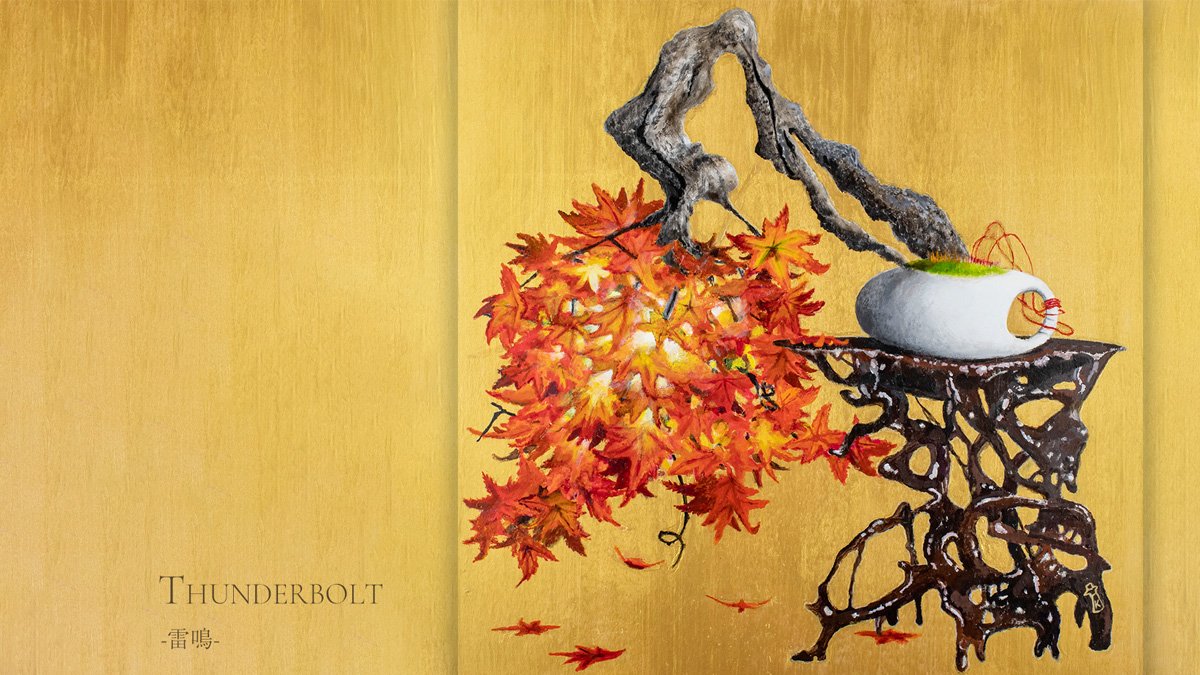Kengo Bonsai Gallery
Art Project

Works
- Website production and other promotions
- Exhibition Produce
About “Bonsai”
A bonsai can live in a small pot for as long as a thousand years. It is also an art form that requires human care to keep it alive for those long years.
In the days of war and in the days of disasters, valuable bonsai have been protected and nurtured by human beings.
Nowadays, this art cannot be enjoyed everywhere in the world due to abnormal weather conditions.
We would like to add our own imagination to this wonderful culture as a pictorial artwork, and to transmit it to anywhere in the world.
We hope that the artwork will also be used as a testament to Japan’s proud technologies and industries, such as Japanese tea and sake.
What it means to work on this project
There is another meaning to working on this project. It is to think with many people about what is truly inclusive.
It may vary depending on the national character.
This artist has long suffered from symptoms caused by schizophrenia, developmental disabilities, ADHD, and learning disabilities. Sometimes he actually saw hallucinations, sometimes heard auditory hallucinations, and spent time not knowing the boundary between reality and fantasy. But now, thanks to my reassuring doctor, I have no such symptoms at all, no side effects, and no major daily problems. The only symptoms I have left are difficulty with train transfers and crowds.
Can the work of someone with only these symptoms be lumped into “art for the disabled”?
He says that although he does take medication, he feels uncomfortable about being categorized as a person with disabilities now because of the severe medical conditions he experienced. He also noted that when he worked for an art organization for people with disabilities, he found it difficult to have people with intellectual, mental, and physical disabilities work in the same place in the same way, and he believes that three categories of disability are not sufficient, just as there are many different categories of LGBTQ+ people.
The members of CLASS EARTH decided to manage him because they shared this sense of challenge, having run a medical family support nonprofit.
We wanted to make this project a place where people could enjoy the world of the work, removing labels of disability, age, gender, or anything else.
Three Reasons for Inclusive Art
There are three reasons why we aim for true inclusive art, not art for the disabled.
1・ Many of those who are able to demonstrate their talents as artists have high spatial awareness, a good sense of sound, or other abilities that can be said to be inevitable due to their brain characteristics. In fact, I think they are even the majority. They become artists because they have a high level of artistic thinking. This is a very nice thing to have found the right profession.
A couple of decades ago, I think we would have called art by people with intellectual disabilities art for the disabled, but now that more and more people are being diagnosed with developmental disabilities, gray zone, etc., I think it is too much of a lumping together for the current era. I also feel very uncomfortable with the trend in Japan to call this art for people with disabilities SDG-like.
- Inclusive has no boundaries. Art works do not require words, and rather, it is thought that improving and developing art literacy as the ability to read and understand without information will lead to creativity. Is it a necessary “label” to have boundaries for artists while art has no boundaries?
We would like to think about true inclusiveness with everyone, and look forward to discussing collaboration with you.
Please note that when we hold an event using this artwork, a portion of the proceeds will be donated to a children’s institution for the disabled.
Kengo Bonsai Art gallary
https://kengo-bonsai.com/
